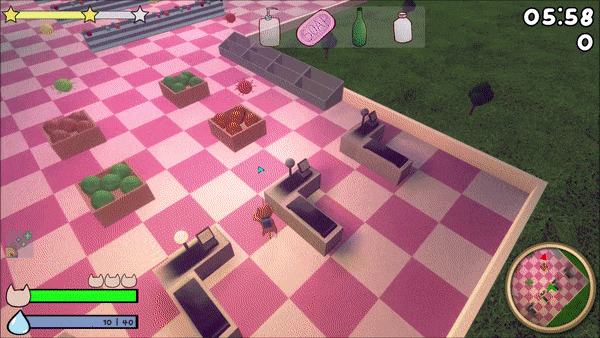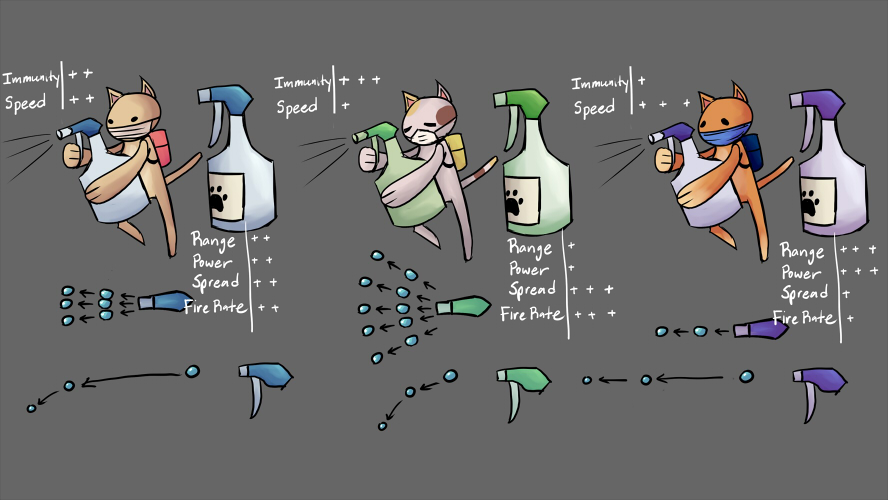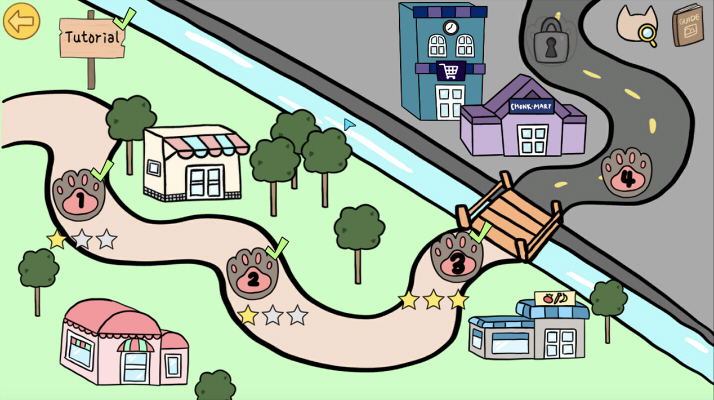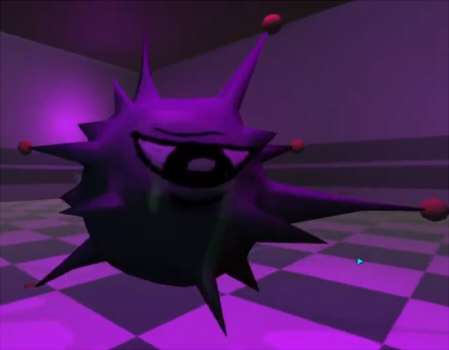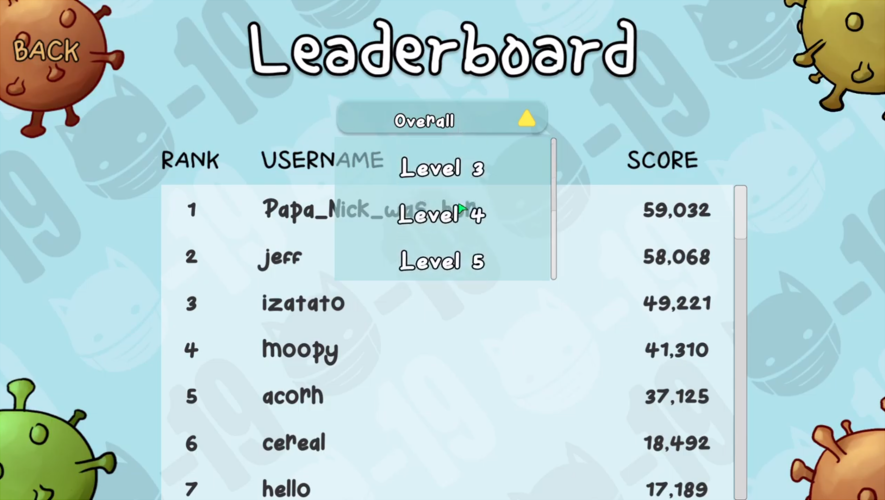Chonky-19

A 3D cat shooter with tips to educate players about how to be safe grocery shopping during the COVID-19 pandemic.
Features
- Shoot your way through hordes of COVID-19 particle monsters
- Quickly grab your groceries and get out safely for your family's sake
- Compete against others with your high scores displayed on an online leaderboard
- 3 unique playable cat characters each with their own strengths, weaknesses, and stories
- 6 playable levels and various achievements to collect
Goals
- Create a fun and engaging 3D-shooter
- Integrate COVID-19 safety tips into game
- Gain experience in different aspects of game development based off of individual interests
Constraints
- I was the only one who had prior knowledge & experience in game development out of the 5 total developers
- 10 weeks to fully design, develop, and publish the game
- All team members were working remotely from each other
